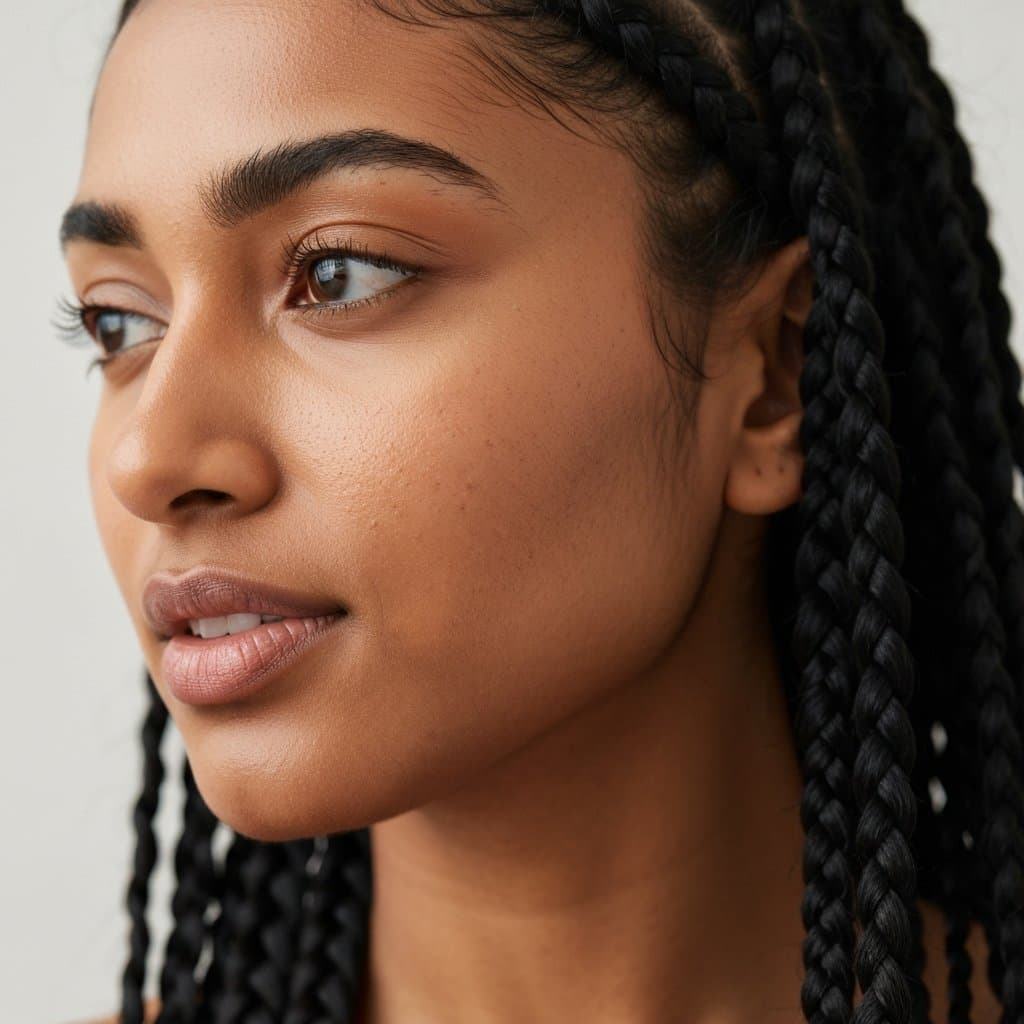The Braid Renaissance: 20 Modern Takes on Classic Braided Hairstyles | Elevate Your Look
Welcome to the Braid Renaissance
Braids are more than just a hairstyle; they are a timeless art form, a cultural touchstone, and a versatile expression of personal style. For centuries, plaits have woven their way through history, but today, we are living in a true Braid Renaissance. Classic techniques are being deconstructed, reimagined, and fused with contemporary aesthetics to create looks that are both nostalgic and refreshingly new. This evolution has transformed braids from a simple, functional style into a sophisticated statement suitable for the runway, the boardroom, and everything in between. The modern braid is all about texture, dimension, and personalization.
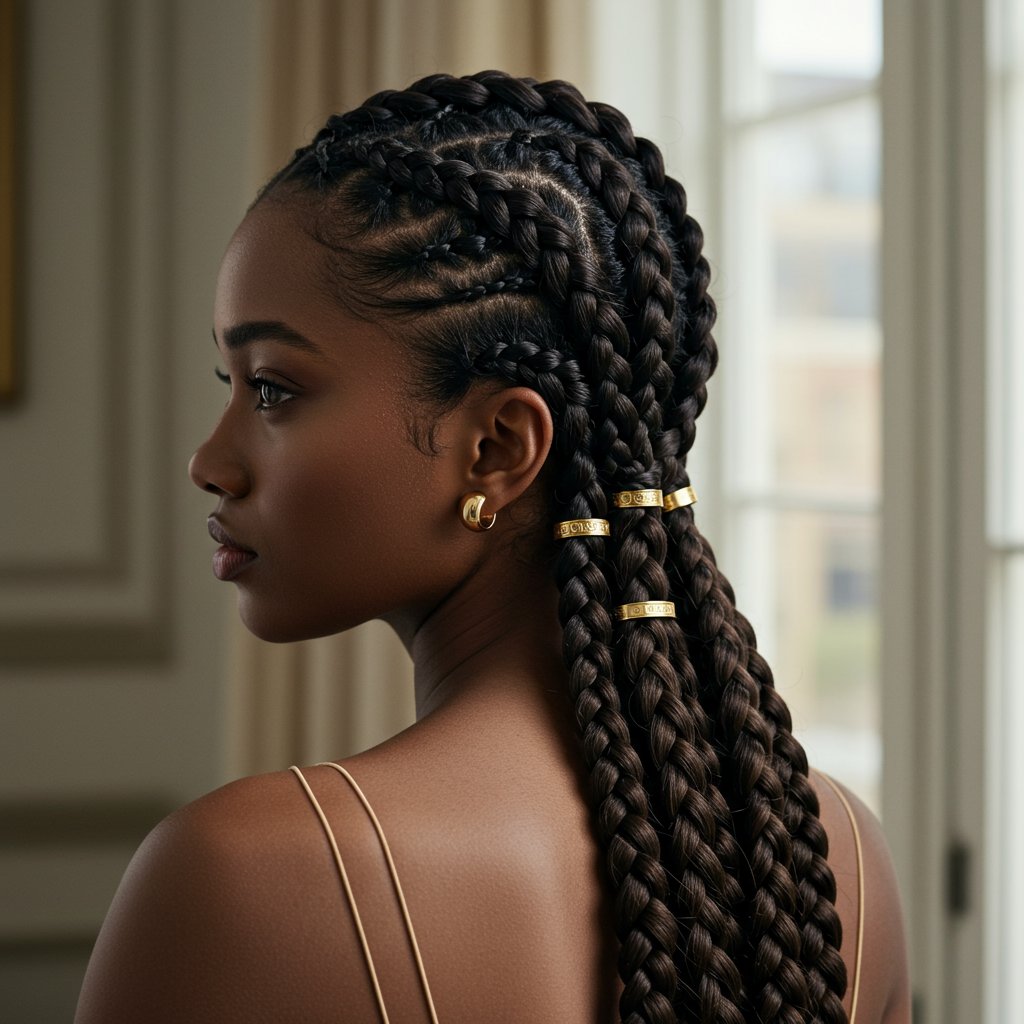
This guide explores the exciting world of modern takes on classic braided hairstyles. We're moving beyond the basic three-strand plait to showcase 20 innovative styles that are defining the current hair landscape. Whether you have long, flowing locks, a chic bob, or are looking for a stunning protective style, there's a modern braid waiting to elevate your look. Prepare to be inspired by the creativity and craftsmanship that proves braiding is an ever-evolving art, and discover how an experienced stylist can bring these intricate visions to life, tailored perfectly to you.
The Evolution of the Classic Three-Strand Braid
The humble three-strand braid is the foundation upon which the entire world of braiding is built. It’s the first technique most of us learn, a simple over-and-under pattern that is both elegant and practical. But in the current braid renaissance, this classic has been given a significant upgrade. Stylists and hair enthusiasts are pushing its boundaries, proving that even the simplest concept can become a canvas for high-fashion expression. The modern approach is less about perfect, uniform plaits and more about playing with proportion, texture, and embellishment.
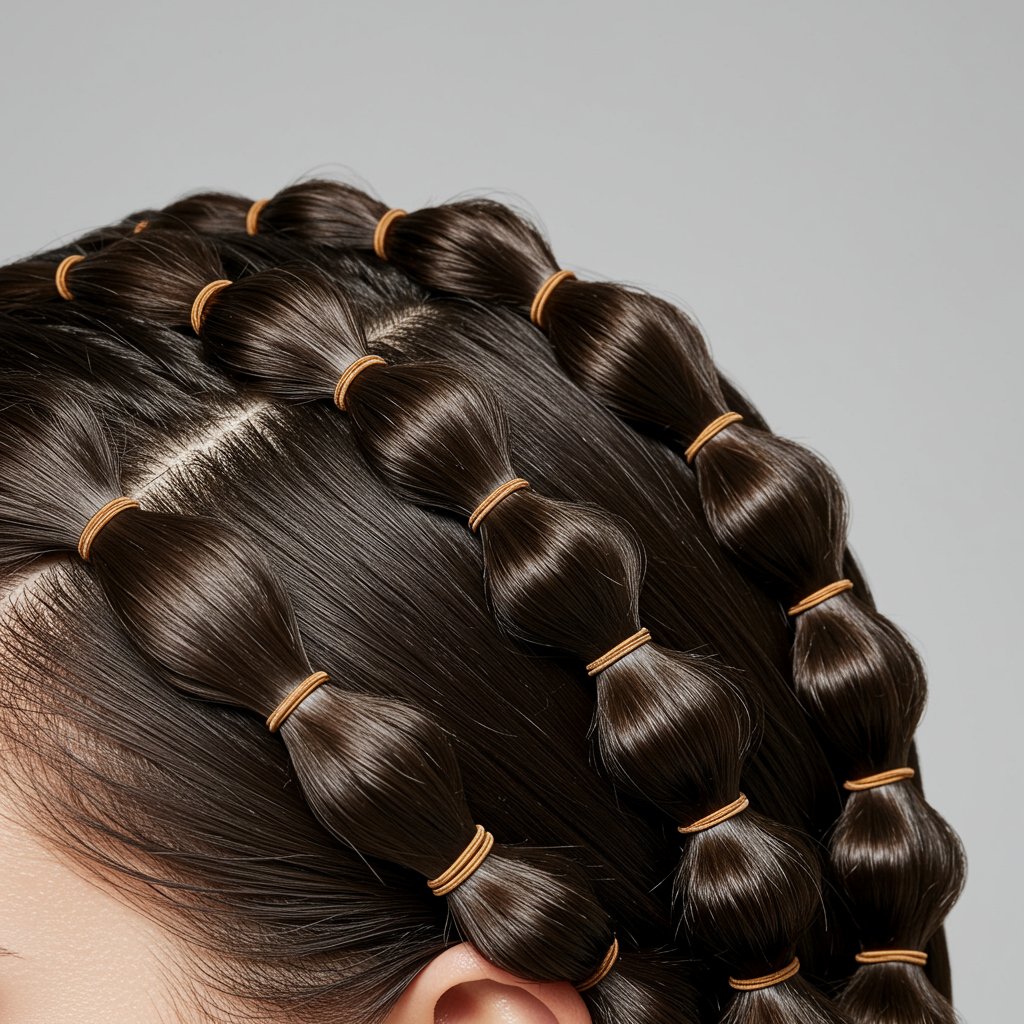
This new wave of three-strand styles focuses on creating visual interest through deliberate imperfection and creative additions. Think looser, softer braids that convey an effortless romanticism, or bold, structured looks that make a powerful statement. It's about taking a familiar concept and asking, "How can this be different?" The answer lies in techniques like "pancaking" (pulling the edges of the braid to make it appear wider and fuller) and incorporating unexpected elements. Here are a few ways the classic is being reinvented.
1. The Deconstructed Braid
This style is the epitome of effortless chic. After creating a standard braid, it's gently pulled apart at the sides to create a softer, wider, and more voluminous look. The key is to embrace the flyaways and create a lived-in, romantic texture that looks both intentional and beautifully undone.2. The Bubble Braid
For a playful and modern twist that requires no actual braiding, the bubble braid is a standout. This look is achieved by securing a ponytail and then placing elastics down its length, pulling each section apart to create rounded "bubbles." It's graphic, fun, and endlessly customizable with different colored elastics.3. The Accessorized Braid
Accessories are transforming simple braids into works of art. Weave a silk scarf through your plait for a pop of color, dot it with delicate pearls for a touch of elegance, or add metallic cuffs and rings for an edgier, bohemian vibe. This is personalization at its finest.French & Dutch Braids Reimagined
French and Dutch braids are cornerstones of intricate hairstyling. The French braid (plaiting sections over each other) creates a smooth, flat look, while the Dutch braid (plaiting sections under each other) results in a raised, 3D effect that pops off the head. For years, they were associated with neat, practical styles. Today, however, they are being reimagined in ways that are bold, dynamic, and anything but basic. These reimagined styles play with placement, scale, and combination to create looks that range from sporty-chic to red-carpet-ready.
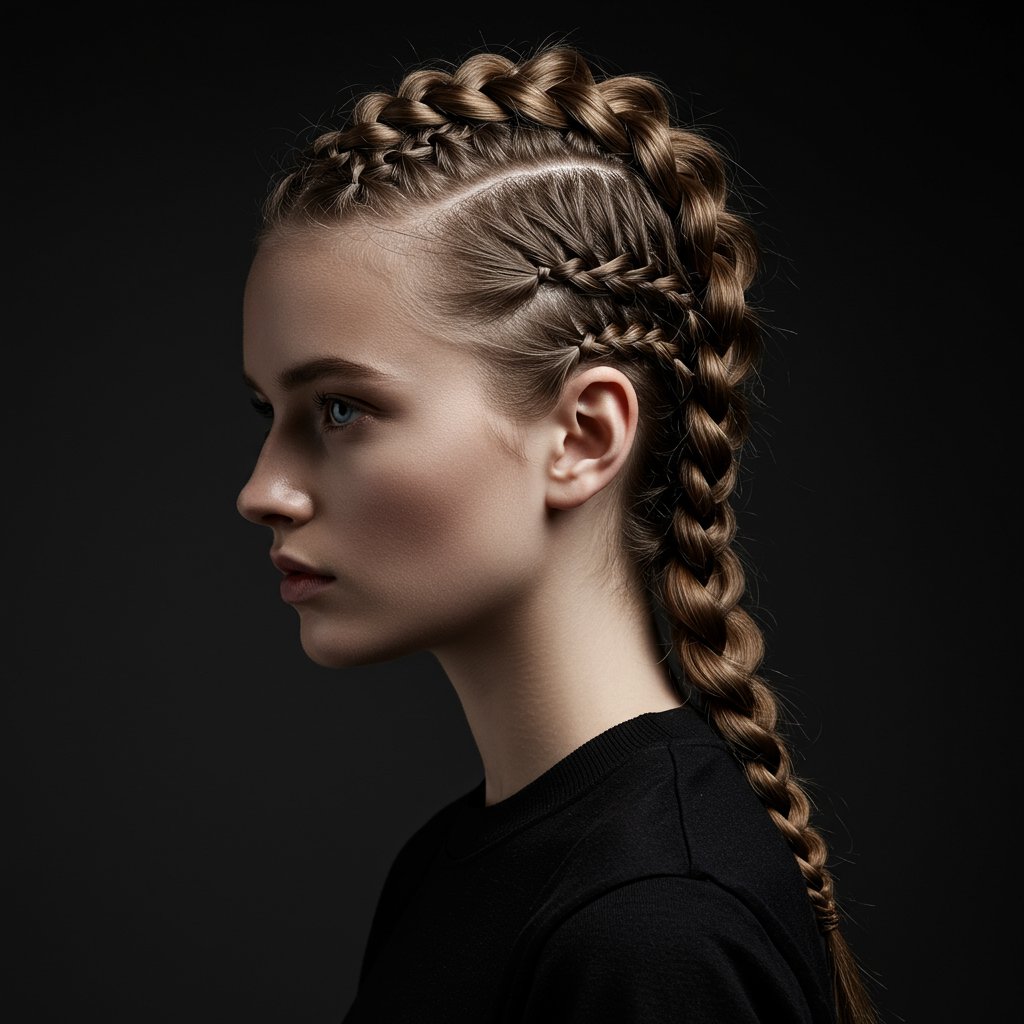
The modern interpretation of these classics is all about versatility. A single Dutch braid can be transformed into an edgy faux hawk, while double braids can be sleek and severe or soft and romantic. It’s no longer about a single style but about how the technique can be used as a structural element in a larger look. This adaptability has made them a favorite for stylists looking to create unique and memorable hairstyles.
4. The Double Dutch Pigtails
Once a playground staple, this look is now a high-fashion favorite. Modern versions are ultra-sleek, starting high on the head with sharp, clean parts. They can be braided all the way down or end at the nape, exploding into voluminous ponytails.5. The Crown Braid (Modern Milkmaid)
The classic milkmaid braid gets a romantic update. The modern crown braid is often softer, with face-framing tendrils left out to soften the look. The braid itself might be a deconstructed French or Dutch braid, creating a halo effect that is both regal and bohemian.6. The Side-Swept Dutch Braid
An elegant and asymmetrical look, a single, chunky Dutch braid sweeping from one side of the head to the other is a showstopper. It works beautifully for formal events and can be pancaked for extra drama and volume.7. The Braided Mohawk/Faux Hawk
For an edgy look without the commitment of a haircut, a central Dutch braid is the perfect solution. By creating a tight, raised braid down the center of the head and keeping the sides slicked back or voluminous, you can mimic the silhouette of a mohawk.The Fishtail Braid Gets an Upgrade
The fishtail braid, with its intricate, herringbone-like pattern, has always felt a little more special than its three-strand counterpart. Created by weaving together two sections of hair, it produces a detailed and visually complex look that exudes bohemian sophistication. The modern renaissance has taken this beautiful technique and amplified its potential. No longer confined to a simple, straight-down-the-back style, the fishtail is now being used as a textural element in a variety of creative ways.
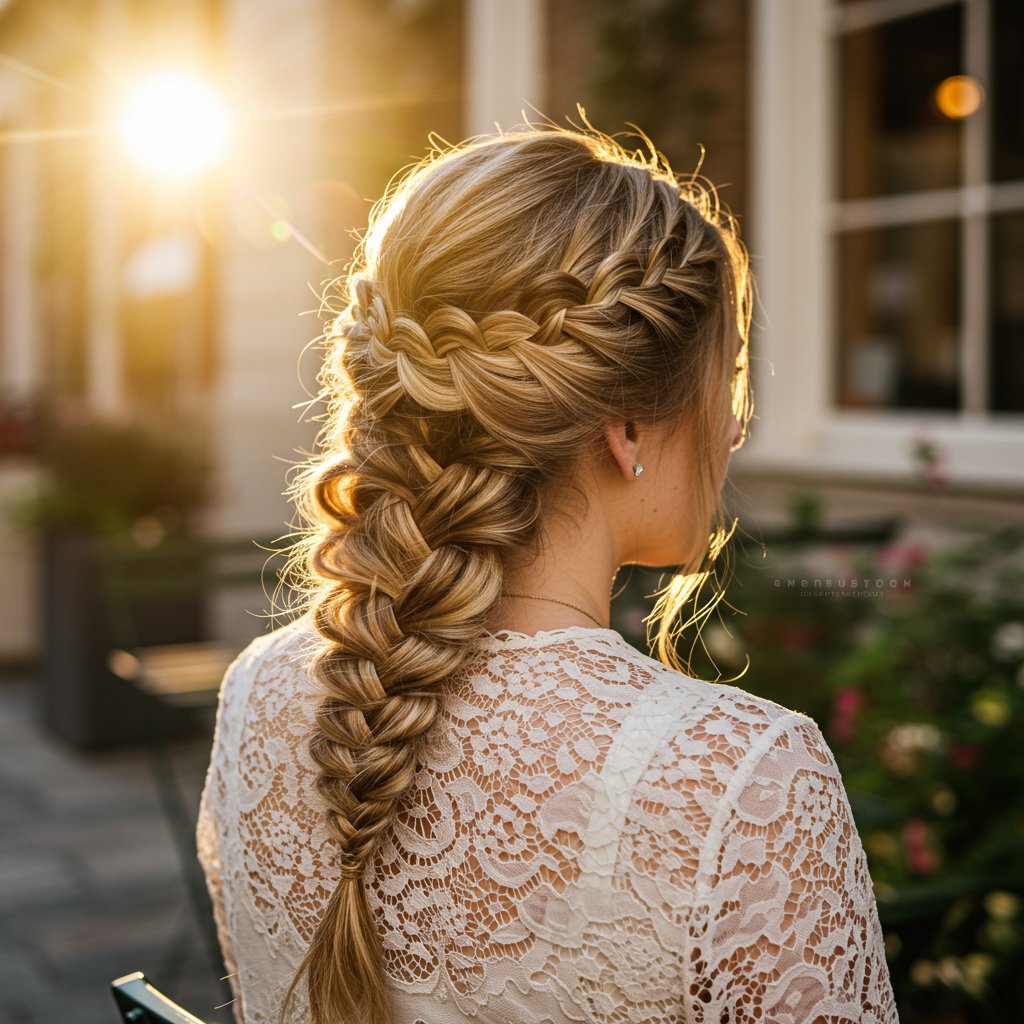
Today's upgraded fishtail braids are all about impact. They are often made chunkier, pulled apart for a fuller effect, or incorporated as a surprise detail in larger hairstyles. The intricacy of the weave provides a stunning contrast to loose waves or sleek ponytails, making it a versatile tool in a stylist's arsenal. It can be the star of the show or a subtle accent that elevates the entire look.
8. The Chunky Fishtail Ponytail
Start with a high, sleek ponytail, then work a fishtail braid through the length. The real magic happens when you gently pull each section of the braid apart, creating a thick, voluminous, and incredibly textured ponytail that makes a huge statement.9. The Fishtail Accent Braid
A small, delicate fishtail braid can be a beautiful accent in a half-up style or woven into loose, beachy waves. It adds a touch of bohemian flair and visual interest without overwhelming the overall look.10. The Infinity Braid
While technically a different technique, the Infinity Braid shares the two-strand DNA of a fishtail but with a more complex, figure-eight weaving pattern. The result is a smooth, rounded braid that looks incredibly intricate and polished.Protective Styles with a Modern Twist
Protective styles, such as box braids and cornrows, are designed to protect textured hair from environmental stressors and manipulation, promoting health and growth. This beautiful and functional tradition has a rich cultural history and is now at the forefront of the braid renaissance, receiving stunning modern updates. The focus has shifted toward techniques that prioritize scalp health, incorporate diverse textures, and allow for even greater creativity in parting and design.

These modern twists are not just about aesthetics; they represent an evolution in hair care. Innovations like knotless braids reduce tension on the scalp, while the inclusion of curly, undone ends in goddess braids adds a soft, bohemian feel. Stylists are now artists, using the scalp as a canvas for intricate stitch patterns and geometric parts. This movement celebrates the beauty of natural hair while pushing the boundaries of what a protective style can be.
11. Knotless Box Braids
A game-changer in the world of protective styling. Unlike traditional box braids that start with a knot at the base, knotless braids begin with your natural hair and gradually feed in braiding hair. This results in a flat, seamless look that is lighter and puts significantly less tension on the scalp.12. Goddess Braids
This dreamy style incorporates curls into the braid itself. Whether it’s box braids, cornrows, or Fulani braids, strands of curly hair are left out along the length and at the ends, creating a beautiful, multi-textured look that is soft, romantic, and full of movement.13. Fulani Braids with a Twist
This traditional West African style, characterized by a central cornrow with others braided towards the face, is being modernized with creative parting, a mix of braid thicknesses, and the addition of wooden, metal, or crystal beads and cuffs.14. Stitch Braids
Stitch braids elevate the classic cornrow with a unique parting technique. Using the pinky finger or a rattail comb, the stylist creates a horizontal line or “stitch” effect as they feed in braiding hair. This results in incredibly clean, sharp, and visually striking braids.Intricate Weaves and Unique Braiding Techniques
Beyond the well-known classics, the braid renaissance has brought lesser-known and highly complex techniques into the spotlight. These styles are for those who want to make a truly unique statement, showcasing an advanced level of artistry and skill. These are not your everyday braids; they are intricate weaves that often play with dimension, shape, and pattern in unexpected ways. Learning these techniques requires patience and precision, which is why they are often best executed by a professional stylist.

These unique braids transform hair into a sculptural medium. From the scientific elegance of the DNA braid to the cascading romance of the waterfall braid, each style offers a different aesthetic. They demonstrate the limitless possibilities of hair braiding, proving that with enough creativity, hair can be woven into almost any conceivable shape or pattern. These styles are perfect for special occasions or for anyone looking to wear a true piece of hair art.
15. The DNA Braid
Also known as a spiral or helix braid, this mesmerizing style uses three or four strands to create a braid that twists on itself, perfectly mimicking the look of a double helix. It's a scientific and stunningly beautiful look.16. The Waterfall Braid
A romantic and ethereal style, the waterfall braid is like a horizontal French braid where one piece of hair is dropped out of the braid with each weave, creating a cascading "waterfall" effect with the loose strands.17. The Four-Strand & Five-Strand Braid
Adding just one or two more strands to the classic three-strand braid creates a completely different look. These braids are rounder, thicker, and have a more complex, woven appearance. A ribbon can also be used as one of the strands for a pop of color.18. The Chain Link Braid
This innovative technique involves creating a series of interlocking loops rather than a traditional weave. The finished result looks like a delicate, woven chain, offering a unique and eye-catching texture.The Ultimate Braid Hybrids
The true spirit of the braid renaissance lies in fusion. Why stick to just one type of braid when you can combine them for a look that is completely your own? Braid hybrids are all about mixing and matching techniques to create a multi-dimensional, textured hairstyle. This approach allows for ultimate creativity, blending the sleekness of a cornrow with the romance of a fishtail, or the structure of a Dutch braid with the softness of loose waves.

These composite styles are perfect for showcasing individuality. A stylist can create a look that is perfectly tailored to your hair type, face shape, and personal style. It could be as simple as a French braid that transitions into a fishtail at the nape of the neck, or as complex as a half-up style that incorporates waterfall, three-strand, and accent braids. The possibilities are truly endless, and the results are always unique.
19. The Braided Half-Up, Half-Down
This is a versatile and popular hybrid. It could feature two Dutch braids meeting at the back of the head, with the rest of the hair flowing in loose waves. Or, it might involve a delicate crown braid with a voluminous, curly texture below.20. The Mixed-Texture Braid
This is the ultimate expression of creativity. A single, long braid can start as a Dutch braid at the top, transition into a four-strand braid in the middle, and finish as a fishtail at the end. This creates a fascinating and dynamic look that keeps the eye moving.Tips for Achieving and Maintaining Your Modern Braids
Creating a stunning modern braid is only half the battle; proper preparation and maintenance are crucial for ensuring your style looks its best and lasts as long as possible, all while keeping your hair healthy.

Prep is Key
Always start with hair that is clean, detangled, and well-moisturized. For sleek styles like stitch braids, a good blowout can make the hair easier to section and braid cleanly. For more textured, romantic styles, working with your natural wave or curl can add beautiful volume. A light-hold mousse or texturizing spray can provide grip, making slippery hair easier to handle.Essential Products
For sharp parts and clean edges, a quality edge control is a must. To tame flyaways and add shine to the finished braid, a lightweight hairspray or shine mist works wonders. For protective styles that will be in for a while, a scalp oil or spray can help soothe itching and keep the scalp hydrated. A setting mousse is also excellent for setting cornrows and stitch braids, giving them a polished, salon-fresh finish.Longevity and Care
To protect your braids overnight, sleeping on a silk or satin pillowcase or wearing a silk scarf or bonnet is essential. This minimizes friction, which causes frizz and can put stress on your edges. Avoid washing your hair too frequently, and when you do, focus on cleansing the scalp with a diluted shampoo and handle the braids gently. Always ensure your hair is 100% dry to prevent mildew, especially with thicker protective styles.When to See a Professional
While simple styles like a bubble braid can be a fun DIY project, intricate styles like stitch braids, DNA braids, or long-lasting knotless box braids are best left to an experienced stylist. A professional has the skill to create clean parts, maintain consistent tension (not too tight!), and ensure the final look is polished and secure. They can also provide personalized advice on how to care for your specific braided hairstyle and hair type.FAQ: Your Modern Braid Questions Answered
Q1: How can I make my braids look fuller and thicker? The best technique is called "pancaking." After your braid is secured, gently pull on the outer edges of each loop, starting from the bottom and working your way up. This flattens and widens the braid, creating the illusion of much thicker hair. Using a texturizing powder or spray before braiding can also add grit and volume.
Q2: Are knotless braids really better for my scalp? Yes, for most people, they are. The traditional knot at the base of box braids can create significant tension on the hair follicle, which can lead to discomfort and even traction alopecia over time. The knotless feed-in method creates a flatter, more natural look that is much gentler on the scalp from day one.
Q3: What's the best way to wash my hair with braids in? Focus on the scalp. Dilute your shampoo with water in a squeeze bottle to easily apply it directly to your roots. Gently massage your scalp with your fingertips (not nails) and let the suds run down the length of the braids. Rinse thoroughly and gently squeeze out excess water. It's often best to follow up with a leave-in conditioner spray to keep the hair moisturized.
Q4: How long can I keep protective braid styles in? The general recommendation is four to eight weeks. Leaving braids in for too long can lead to matting at the new growth, product buildup on the scalp, and potential breakage upon takedown. Listen to your hair and scalp; if you experience excessive itching or tension, it may be time to take them out sooner.
Q5: Can I achieve these modern braided hairstyles on short hair? Absolutely! Many modern braids can be adapted for shorter hair. Accent braids, small crown braids, or tight French braids on the side can look incredibly chic on a bob or pixie cut. For styles requiring more length, a professional stylist can skillfully incorporate extensions to achieve the desired look.
Q6: What are the best accessories for braids in 2025? This year is all about personalization. Delicate gold or silver cuffs and rings are still very popular. We're also seeing a rise in natural elements like wooden beads and small shells for a bohemian look. For a touch of elegance, weaving in fine metallic thread or adding pearl or crystal embellishments is a beautiful choice. Silk scarves remain a timeless and versatile accessory.
Conclusion: Embrace Your Braid Identity
The Braid Renaissance is a celebration of creativity, history, and personal expression. From the edgy appeal of a braided faux hawk to the romantic intricacy of a waterfall braid, there has never been a more exciting time to explore the world of braided hairstyles. These 20 modern takes on classic styles are just the beginning—a starting point for you to discover what makes you feel powerful, beautiful, and unique.
Experimenting with these looks can be a transformative experience, allowing you to change your style dramatically without a permanent commitment. Whether you try a simple bubble braid at home or collaborate with a skilled hair artist on a complex protective style, the key is to have fun and embrace the artistry. Consult with a professional stylist to discuss which modern braids will work best for your hair type and lifestyle, and step confidently into this new era of woven wonders.

